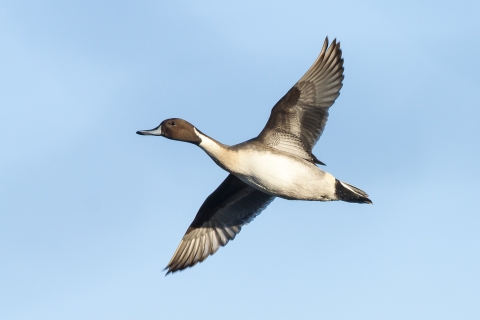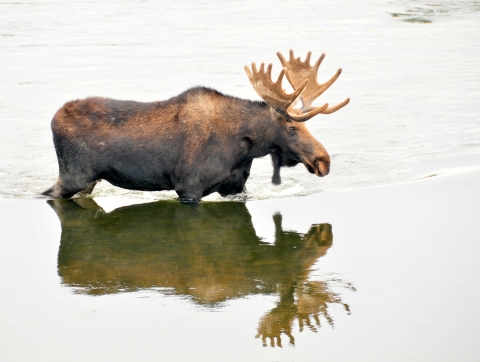Seasons of Wildlife
Spring at Bear Lake comes late, with some ice still on the refuge marsh through late April. Fall, on the other hand, comes early, with September bringing large numbers of sandhill cranes and waterfowl on their way south for the winter. The freeze usually begins in November, with most birds leaving the refuge at that time. Exceptions are rough legged hawks and bald eagles that will winter here.
Spring
The early migrants such as Canada geese, mallards, and northern pintails arrive in early March. From mid-March through April spring migration peaks as the ice recedes. Ibis nest in large numbers on islands in the refuge. Trumpeter swans nest at Bear Lake; this is a species whose populations have declined from historic levels and are being actively managed for at the Refuge.
Summer
During June, many duck broods of mallards and canvasbacks can be seen, as well as ruddy ducks, cinnamon teal, shovelers and gadwalls. White faced ibis nest on the refuge as well as sandhill cranes and franklin gulls.
Fall
Young birds begin to fly; waterfowl pass through the valley on fall migration from mid-September through mid-November. Moose enter the rut (mating season).
Winter
Winters can be long and harsh in this region, with snow for months at a time. Bald eagles and rough-legged hawks do overwinter here.
Featured Species
Bear Lake NWR is home to nesting Redheaded ducks, Canvasbacks, Canada Geese, Trumpeter Swans, White-faced ibis, Franklin Gulls, and Forester’s Terns.



